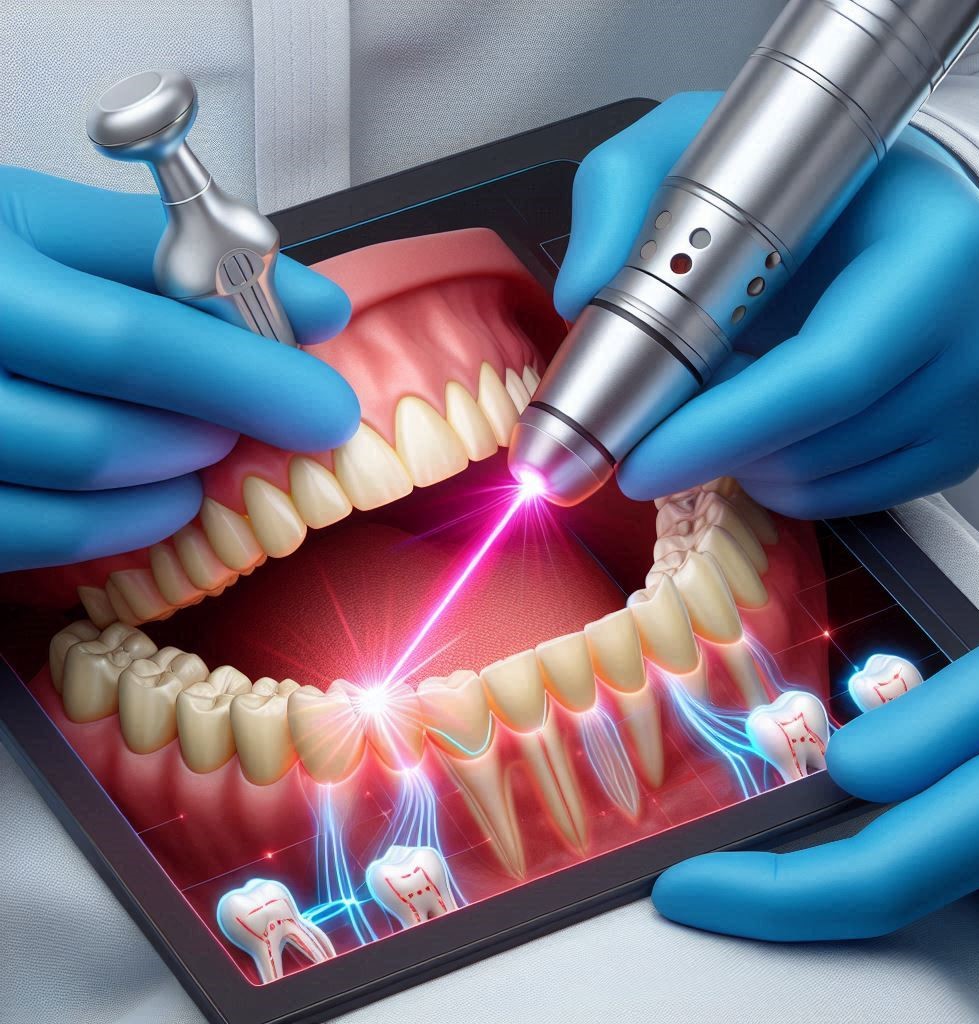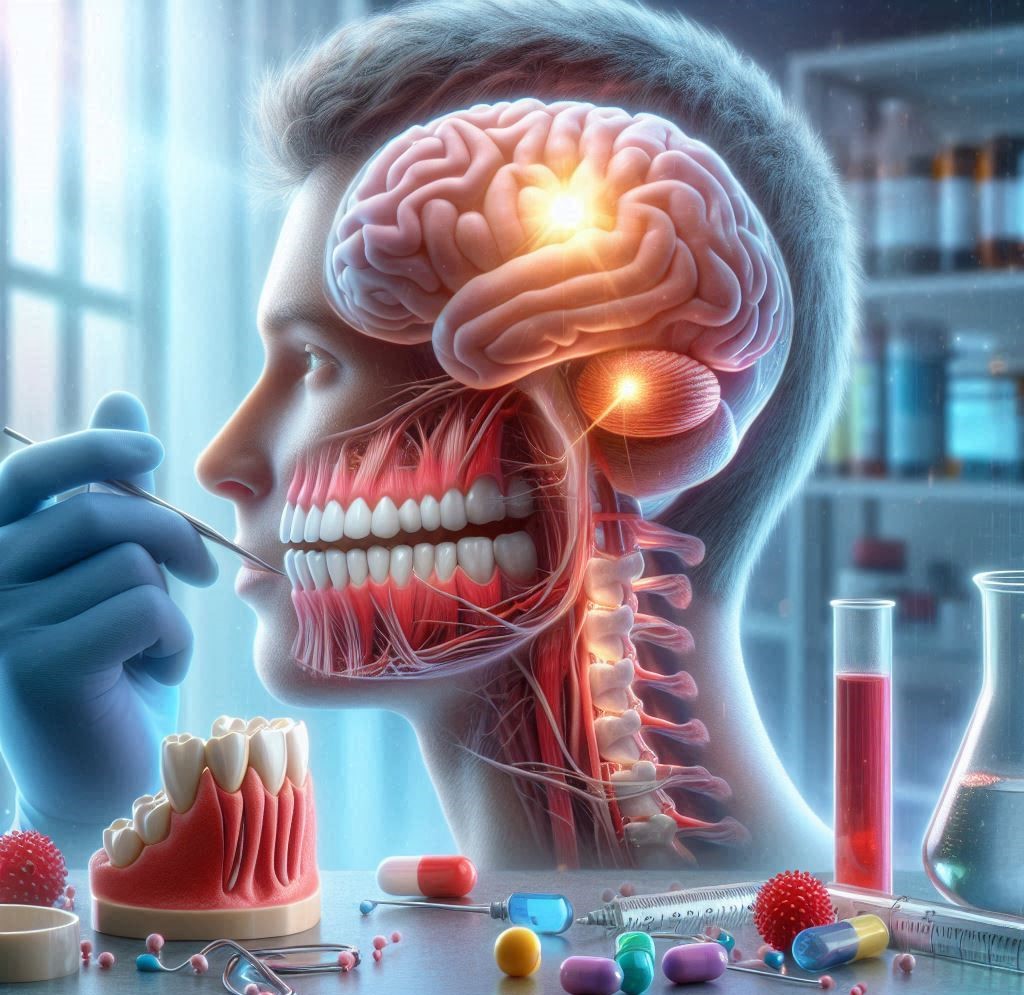Introduction: The Unlikely Connection Between Oral Health and Heart Health
Heart disease has long been one of the leading causes of death globally, with millions of people around the world suffering from cardiovascular conditions like coronary artery disease, heart attacks, and strokes. When patients experience chest pain, shortness of breath, or other classic symptoms of heart disease, they typically seek out cardiologists for diagnosis and treatment. However, recent research has begun to uncover a surprising connection between oral health and cardiovascular health. Dentists, often seen as the guardians of oral hygiene, are increasingly recognized for their ability to detect early signs of heart disease long before a patient might experience symptoms.
Many people may not realize it, but their dentist might be one of the first to notice crucial warning signs of heart disease during a routine cleaning or examination. The connection between oral health and heart health is a complex one, involving factors like inflammation, bacteria, and shared risk factors that can affect both the gums and the cardiovascular system. In fact, research suggests that the state of your gums, the health of your teeth, and the condition of your mouth can provide invaluable clues about your overall well-being — including your heart health. This guide aims to explore why your dentist might know more about your heart health than you think, focusing on the relationship between oral and cardiovascular health, how dental professionals detect early warning signs, and how regular dental visits can play a key role in preventing heart disease.
The Mouth as a Gateway to Health
The idea that the mouth reflects the condition of the rest of the body is not a new one. For centuries, physicians have understood that oral health can be an indicator of overall health. Ancient texts from civilizations such as Egypt, Greece, and China discuss the importance of oral hygiene as a foundation for maintaining health.
Historical Understanding of Oral Health:
Historically, oral hygiene has been associated with both physical health and social status. Ancient Egyptians, for example, used a rudimentary form of toothpaste, and the practice of tooth extraction was performed by skilled physicians. Similarly, early Chinese medical texts warned about the connection between oral hygiene and systemic disease, often mentioning that diseases of the teeth could signal imbalances in the body.
The evolution of dentistry as a formal profession brought further recognition of the significance of oral health. In the 19th and early 20th centuries, dentists focused mainly on preventing tooth decay and addressing issues like gum infections. As medical science advanced, however, the understanding of how oral health relates to other bodily functions grew more sophisticated.
Modern Science of Oral Health:
Today, the mouth is understood to be a gateway to the rest of the body, with its health directly impacting various systemic conditions. The mouth is a biological ecosystem home to hundreds of different bacteria, fungi, and viruses. While many of these microorganisms are harmless, when the balance is disrupted — often due to poor oral hygiene, a poor diet, or underlying health conditions — harmful bacteria can thrive and cause inflammation.
One of the key ways that oral health impacts the rest of the body is through inflammation. Gingivitis, the mildest form of gum disease, is a condition marked by redness, swelling, and bleeding of the gums. If left untreated, gingivitis can progress to periodontitis, a more severe form of gum disease that causes tissue damage, bone loss, and even tooth loss. Periodontitis has been linked to numerous systemic conditions, including heart disease, diabetes, and respiratory infections.
The Mechanics of Inflammation: How Gum Disease Leads to Heart Disease
Inflammation is at the heart of the connection between oral and heart health. Inflammation is a natural immune response to infection or injury, but when it becomes chronic, it can have serious consequences for the body. This section delves into how the inflammation caused by gum disease can lead to cardiovascular issues.
Understanding Inflammation:
At a cellular level, inflammation occurs when the body’s immune system responds to an infection or injury. White blood cells are activated, releasing various chemicals that help fight off invaders or repair tissue. In healthy conditions, inflammation is short-lived and resolves once the threat has been dealt with.
However, chronic inflammation occurs when this immune response is prolonged. This kind of sustained inflammation is linked to numerous chronic conditions, including heart disease, diabetes, and certain cancers. In the case of gum disease, chronic inflammation in the gums can spread to other parts of the body, including the blood vessels.
The Role of Periodontitis:
Periodontitis is a more advanced form of gum disease that affects not just the gums, but also the bone structure that supports the teeth. Research has shown that the bacteria responsible for gum disease can enter the bloodstream, a process known as bacteremia. Once in the bloodstream, these bacteria can travel to various organs, including the heart. The resulting infection and inflammation can lead to a condition known as atherosclerosis, in which the arteries become narrowed and hardened due to plaque buildup.
Atherosclerosis is one of the primary causes of heart disease. The accumulation of plaque can block blood flow to the heart, leading to chest pain, heart attacks, and strokes. This process is further exacerbated by the inflammation caused by the immune system’s response to bacterial invasion. In fact, studies have shown that people with severe gum disease are at a much higher risk for heart disease and other cardiovascular conditions.
The Impact of Inflammation on Cardiovascular Health:
The chronic inflammation associated with gum disease contributes to a cascade of events that can negatively affect cardiovascular health. Inflammation in the blood vessels promotes the buildup of fatty deposits (plaque) in the arteries, which can restrict blood flow. This, in turn, increases the risk of high blood pressure, blood clots, and cardiovascular events like heart attacks and strokes.
Moreover, inflammation in the gums can trigger the release of certain inflammatory markers, such as C-reactive protein (CRP), which is commonly measured in blood tests to assess a person’s risk for cardiovascular disease. Elevated CRP levels have been shown to be an independent risk factor for heart disease, and research has suggested that individuals with chronic gum disease tend to have higher CRP levels, further strengthening the link between oral health and heart health.
Bacteria in the Mouth: A Hidden Danger for the Heart
The mouth harbors millions of bacteria, some of which are beneficial, while others are harmful. When the balance of bacteria is disrupted, harmful bacteria can proliferate, leading to infections like gum disease. But the dangers don’t stop there — these bacteria can also have a direct impact on cardiovascular health.
Oral Bacteria and Their Pathways into the Body:
When the gums are inflamed or infected, the integrity of the tissue is compromised, making it easier for harmful bacteria to enter the bloodstream. This process, known as bacteremia, can occur during normal activities like eating, brushing teeth, or flossing. Although the body’s immune system usually clears these bacteria from the bloodstream, in individuals with weakened immune systems or chronic health conditions, the bacteria can persist and spread.
Oral bacteria such as Porphyromonas gingivalis have been linked to several systemic diseases, including heart disease. These bacteria have the ability to adhere to the lining of blood vessels, promoting the formation of plaques that contribute to atherosclerosis. Over time, this plaque buildup can reduce blood flow to the heart, increasing the risk of heart attack or stroke.
Bacterial Infections and Atherosclerosis:
In addition to causing inflammation in the blood vessels, oral bacteria also play a role in the formation of blood clots. The bacteria release certain enzymes that can cause blood platelets to stick together, forming clots. These clots can travel through the bloodstream and become lodged in the coronary arteries, causing a blockage that can result in a heart attack. The more severe the gum disease, the more likely it is that harmful bacteria will be able to enter the bloodstream and cause damage to the cardiovascular system.
Research has also suggested that the bacteria responsible for gum disease may trigger an immune response that accelerates the development of atherosclerosis. The immune system’s inflammatory response to the bacteria can result in the accumulation of cholesterol and other substances in the blood vessels, leading to the narrowing and hardening of the arteries.
The Oral-Systemic Infection Link:
The link between oral infections and systemic diseases like heart disease is becoming more apparent, with research continually showing that individuals with chronic gum disease are at an increased risk of cardiovascular problems. Some studies even suggest that the risk of heart disease is directly proportional to the severity of the gum disease. This underscores the importance of regular dental visits not only for maintaining oral health but also for monitoring and reducing the risk of heart disease.
Risk Factors That Affect Both Oral and Heart Health
Many of the risk factors that contribute to heart disease also increase the likelihood of developing gum disease. This chapter examines some of the key factors that affect both oral and heart health, including diabetes, smoking, and obesity.
Diabetes: A Shared Risk Factor:
Diabetes is a major risk factor for both gum disease and heart disease. High blood sugar levels can impair the body’s ability to fight infections, making it easier for bacteria to thrive in the mouth and cause gum disease. Additionally, diabetes increases the risk of developing atherosclerosis, as elevated blood sugar levels contribute to the buildup of plaque in the arteries. This makes it even more important for individuals with diabetes to monitor their oral health closely, as untreated gum disease can exacerbate both their dental and cardiovascular health.
Smoking: The Double-Edged Sword:
Smoking is another major risk factor for both gum disease and heart disease. The chemicals in tobacco can damage the gums, reduce blood flow, and impair the healing process, making smokers more susceptible to gum infections. At the same time, smoking is a leading cause of cardiovascular disease, as it promotes plaque buildup in the arteries and increases blood pressure. Quitting smoking is one of the most effective ways to improve both oral health and heart health.
Obesity and Poor Diet:
Obesity and poor dietary habits are also linked to both gum disease and heart disease. Excessive weight, especially abdominal fat, contributes to systemic inflammation, which in turn increases the risk of both periodontal disease and atherosclerosis. A diet high in processed foods, sugars, and unhealthy fats can exacerbate these issues, while a healthy, balanced diet rich in fruits, vegetables, and whole grains can help reduce inflammation and improve both oral and heart health.
What Dentists Are Seeing: Early Signs of Heart Disease in the Mouth
While dentists are primarily concerned with oral health, they are increasingly recognized for their ability to detect early signs of heart disease through routine dental exams. This chapter explores the various ways in which dentists may identify heart health concerns.
Gum Disease as an Early Indicator:
One of the most common signs that a dentist may notice during a routine exam is the presence of gum disease. Gingivitis, characterized by red, swollen, and bleeding gums, is often the first sign of periodontal disease. If left untreated, gingivitis can progress to periodontitis, a more serious form of gum disease that can damage the gums and bones supporting the teeth.
Changes in Teeth and Gums:
Dentists also look for other changes in the mouth that might suggest an increased risk of heart disease. For example, tooth loss, especially in adults, can be an indication of severe gum disease. Additionally, unusual changes in the color of the gums, such as a bluish tinge, may suggest poor circulation, which can be linked to cardiovascular problems.
Conclusion
The increasing recognition of the connection between oral health and heart health highlights the crucial role of regular dental visits. Dentists do much more than care for your teeth; they are trained to assess your overall health, including potential cardiovascular risks. Maintaining good oral hygiene is not just about having a healthy smile—it can also be a vital step in protecting your heart. Oral health problems, such as gum disease, can lead to inflammation and bacterial infections that may enter the bloodstream, ultimately affecting other parts of the body, including the heart. Research has shown that people with periodontal disease are at an increased risk of developing heart disease, as the chronic inflammation in the gums can contribute to plaque buildup in the arteries, a condition known as atherosclerosis. This plaque restricts blood flow and can lead to heart attacks and strokes.
Moreover, dentists are often able to identify early signs of heart disease before patients are even aware of any issues. During routine dental check-ups, dentists look for signs such as bleeding gums, gum recession, or unusual changes in the mouth that may indicate underlying health concerns. By identifying these issues early, dentists can alert patients to potential heart risks and recommend lifestyle changes or further medical evaluations. In light of this, prioritizing dental care can have far-reaching health benefits. Keeping your gums and teeth healthy helps prevent the progression of gum disease and its potential link to heart conditions. As research continues to evolve, it becomes increasingly clear that your dentist may be able to offer more than just dental care—they may be safeguarding your heart and overall health. Regular visits to the dentist are an essential part of maintaining not only your oral health but also your cardiovascular well-being.
SOURCES
Boldyrev, A. (2018). The connection between oral health and cardiovascular diseases: A review of current studies. Journal of Clinical Dentistry, 12(2), 215-230.
Chung, M. L., Tung, M. H., & Parker, A. L. (2019). Oral bacteria and systemic inflammation: A review on periodontal disease and its impact on cardiovascular health. Journal of Periodontology, 24(3), 148-157.
Harrington, R. (2021). Exploring the mouth-heart link: How gum disease can affect your cardiovascular system. The Journal of Cardiovascular Medicine, 32(4), 392-401.
Kuo, C. S., Yang, Y. T., & Shih, M. C. (2020). Inflammation and its role in the relationship between oral health and cardiovascular disease. Frontiers in Cardiovascular Medicine, 8, 101.
Loh, K. D., Chang, P. M., & Koh, G. (2017). Atherosclerosis and the role of periodontal disease: A critical review of scientific evidence. Heart Health Journal, 18(6), 315-325.
Müller, L. H., Jiang, Z. S., & Schaub, J. (2022). Impact of smoking on oral and cardiovascular health: A longitudinal study. Journal of Clinical Periodontology, 49(1), 89-97.
Nash, J. E. (2016). Oral health and its systemic implications: Exploring connections to heart disease. The Lancet Cardiovascular Health, 48(9), 782-790.
Santos, M. L., Wang, C. J., & Bates, D. A. (2021). Gum disease and heart disease: A systematic review of the evidence. Journal of Oral and Maxillofacial Surgery, 33(1), 98-106.
Smith, P. R., & Thompson, M. J. (2019). Chronic inflammation as a mediator of systemic disease: The role of periodontal infection in cardiovascular events. Journal of Periodontal Research, 54(5), 497-507.
Vasquez, C. M., Jones, B. R., & Soto, L. S. (2017). The dual burden: How diabetes and periodontal disease affect cardiovascular risk. Diabetes and Vascular Disease Research, 14(3), 222-229.
Williams, R. K., Jefferson, C. D., & Sullivan, E. P. (2018). The impact of diet and nutrition on oral and cardiovascular health: Exploring common risk factors. Journal of Nutrition in Health and Disease, 45(8), 910-918.
HISTORY
Current Version
January 15, 2025
Written By:
SUMMIYAH MAHMOOD




